Robert Haber, M.D.


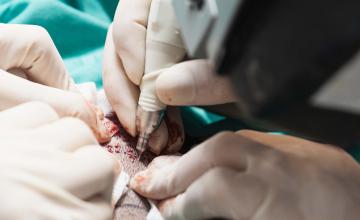
Our physician members perform a very refined hair transplant procedure called "Follicular Unit Hair Transplantation". Today there are two methods for doing this procedure. They differ only in the methods used to harvest and prepare the grafts.
Follicular Unit Extraction Video is provided courtesy of Dr. Alan Bauman.
How the follicular unit extraction (FUE) hair transplant procedure is different than standard strip excision hair transplant surgery.
How the minimally invasive hair transplant procedure known as Follicular Unit Extraction or FUE is performed.
How follicular unit grafts are created under microscopic dissection and then placed into tiny incisions in the balding areas.

Procerin is one of the top selling “all natural” hair loss products on the market today and is often an attractive alternative to drugs like Propecia (finasteride)and Rogaine (minoxidil). Procerin comes in both a tablet and topical form that can be ordered together or separately depending on your hair restoration goals.
Men and women suffering from androgenic alopecia (genetic female hair loss / male pattern baldness) have elevated levels of the hormone DHT (dihydrotestosterone) in their body. Procerin’s claim to fame is that it naturally blocks this DHT without reacting with testosterone like the drugs Propeciaand Avodart (dutasteride). This allegedly allows Procerin to stop hair loss and stimulate hair regrowth without unwanted sexual side effects. Procerin is so convinced their product works, that they offer a 90 day money back guarantee if you don’t receive your desired hair growth results. But how many balding men and women have successfully restored their hair with Procerin?
In order to fully evaluate the efficacy of this product, we must further explore each ingredient to determine whether or not this hair loss treatment delivers what it promises. Below you will find a list of ingredients and information that will help you determine whether or not Procerin is right for you.
The Procerin tablet includes a number of alleged “all natural” DHT blockers including saw palmetto for hair loss, zinc sulfate, pyroxidine, magnesium, and a proprietary blend of gotu kola, nettles, pumpkin seed, eleuthero root, muira puma root, and uva ursi. Many, but not all of these ingredients are also found in the highly popular hair loss treatment Provillus.
Oral saw palmettoand nettle root extracthave been used as “all natural” alternatives to treat benign prostatic hypertrophy (BPH) or enlarged prostates. Theories have thus been produced that they might also effectively treat baldness and alopecia.
Some studies suggest that Zinc when combined with Vitamin B6 may be able to inhibit the conversion of testosterone to DHT in the skin.
Pumpkin seed oils contain the ingredient delta-7-sterine that has been said to protect the prostate by competing with DHT. Therefore, it’s suggested that this ingredient might help reduce the risk of genetic hair loss.
Eleuthero, uva-ursi, muria puma, and horsetail are said to promote healthy hair growth, hair expansion, and a clean scalp. However, promoting healthy hair growth is not the same as stimulating new hair growth, hair regrowth, nor does it indicate they’re effective hair loss treatments.
The Procerin topical solution contains saw palmetto extract, gamma linolenic acid, grape seed extract, azelaic acid, avocado oil, and nettle extract.
Azelaic acid when applied topically has been conjectured to inhibit DHT. Some anecdotal evidence suggests oral saw palmettomay inhibit DHT however; no such evidence exists for topical use. Though nettles are typically consumed orally, some speculate nettle root extract may help fight alopecia areata when applied topically.
One false assumption is that “all natural” hair loss products don’t have potential side effects. Procerin reports directly on their website that reported side effects include mild stomach discomfort and from the topical formula, skin irritation. Additionally, be sure to research each ingredient carefully as some side effects are possible in larger quantities.
Currently there are no standards on dosages of herbal medications in the United States. In addition, no formal clinical studies have been performed on them for treating baldness. Therefore, the suggested daily value listed on the ingredient package is based on something other than government regulation and scientific study.
The discounted cost of the combined formula for a 1 month supply of Procerin is about $50 and is discounted when you buy in bulk. It is also cheaper when you buy in bulk.
Though we can appreciate the aspiration for balding men and women to use herbal products as an “all-natural” replacement for Propecia to treat androgenic alopecia, we’ve seen no third party clinical studies that support the ingredients in Procerin can successfully stop hair loss or stimulate hair regrowth. Due to the lack of compelling evidence in these other conjectured hair loss solutions, it may be more beneficial and cost effective to spend your money on Propecia (finasteride) for men only and Rogaine (minoxidil) that has helped balding men and women worldwide for years. For men who have experienced sexual side effects with Propecia, Procerin may at the very least, be worth trying as an adjunct treatment to Rogaine.


Hair has always been an important symbol of status throughout history. Whether it signified social, financial, gender, or professional status, hair has come to be considered a sign of success. And this idea appears to go all the way back to the cavemen.
A few years ago, the frozen body of a man on the Austrian-Italian border was discovered by scientists. Upon examining the clothing and weapons found on the specimen, they were astounded to find that the body was from the Neolithic Age, making him more than 5,000 years old. They had previously thought that the body was only a few years old, based on his trimmed beard and short hairstyle. So even during prehistoric times hair care was in practice.
Even 4,000 years ago, the ancient Egyptians were searching for a hair loss cure. One “cure” used around 1500 B.C. in Egypt called for reciting a magic spell to the sun god and then swallowing a mixture of onions, iron, red lead, honey and alabaster.
Around 1100 B.C. in ancient Egypt it was popular to rub the fats of various animals onto the scalp, including those of the lions, hippopotamuses, crocodiles, ibex, serpents and geese.
Another recipe for growing hair prepared for the King of Upper and Lower Egypt included toes of a dog, refuse of dates, and a hoof of an ass. Of course, these “cures” failed to re-grow hair.
But with baldness regarded as shameful in ancient Egypt, men and women were willing to put such things on their head in the hope they would work. During these times it was believed that baldness stood for the public announcement of a man’s loss of virility.
Yes, hair loss is even mentioned in the Bible. According to this Old Testament passage God does not condone ridiculing the bald.
Kings 2: 23 “From there Elisha went to Bethel. As he was walking along the road, some youths came out of the town and jeered at him. "Go on up, you baldhead!" they said "go on up, you baldhead!" He turned round, looked at them and called down a curse on them in the name of the Lord. Then two bears came out of the woods and mauled forty-two of the youths. And he went on to Mount Carmel and from there returned to Samaria.”
As a hair loss sufferer you can take solace in knowing that today you have treatments for hair loss only dreamed of by the Kings of ancient Egypt and the emperors of Rome.
Hair loss and attempts to stop or reverse it have been around for centuries.
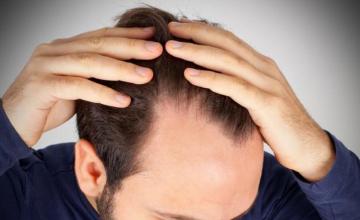
Alopecia areata (sometimes referred to as“spot baldness”) is a medical condition that typically results in patchy hairloss or bald spots on the scalp, beard, arms and legs. Though the exact cause of alopecia areata is unknown, it is thought to be an autoimmune disorder causing the body’s immune system to attack its own hair follicles, resulting in hair loss.
Roughly 2% of the world’s population suffers from alopecia areata and approximately 5% of these have a family history of "alopecia", the medical term for hair loss.
Alopecia areata is normally diagnosed through the observation of symptoms. However, occasionally a scalp biopsy or blood tests may be performed.
There is no cure for alopecia areata and current treatments, while sometimes effective, offer limited success. Current treatments for alopecia areata include; steroid injections, topical corticosteroids (steroid hormonesnaturally produced in the adrenal cortex of vertebrates), topical immunotherapy, Rogaine(minoxidil) and ultraviolet light therapy.
Although permanent hair loss is a possibility, the course of the disease is unpredictable and varies from patient to patient. The good news is that, even without treatment and after many years,the hair follicles do remain viable and ready to resume normal hair production if and when they receive the appropriate signal. Hair regrowth may, and often does, occur in time.
Patients suffering from alopecia areata are rarely considered good candidates for hair transplant surgery because donor hair grafts harvested from the “safe” zone at the rear and sides of the scalp are still vulnerable to the effects of the body’s immune system once transplanted to the recipient sites. However, if the affected area is small, has remained unchanged for an extended period of time and if there is no sign of inflammation below the scalp, hair transplantation may be an option. This would require a thorough consultation with a skilled and experienced hair restoration surgeon and the patient would need to fully understand and accept the risks of such a procedure.
Depending upon the severity of the condition, hair loss concealers like Toppik, Nanogen and DermMatch may help disguise bald patches. In more severe cases, a hair replacement system or full wig may be necessary.
Aswith all forms of hair loss, patients suffering from alopecia areata may experience emotional and psychological trauma. It’s important to reach out to family and friends, join an alopecia support group and/or seek the services of a mental health professional if you are experiencing intense, prolonged and overwhelming psychological effects.
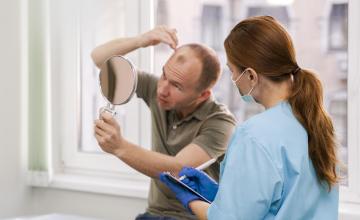
Try telling that to 80 million men and women who are suffering from hair loss in the United States. They will laugh at you. Yet on a daily basis we are bombarded with ads for hair loss treatments like Avacor, Hair Genesis, Fabao and Procerin that use misleading advertising to sell their products. Thanks to their persuasive messages promising to regrow hair, consumers will spend nearly one billion dollars trying to find an effective hair loss remedy and fall victim to misleading advertising like this.
Thinning hair is a source of distress for millions of men and women so it is not unusual for them to seek help from anything that sounds like it will work. Most questionable hair loss products use similar, misleading marketing techniques ranging from claims to testimonials and photos.
Many hair loss products claim to be able to restore hair through the use of drugs, herbal lotions or other exotic applications like lights, lasers or electrical fields. While many of these products have been around for years, there is little evidence that they can restore hair.
How are they allowed to make such claims? These products often use small amounts of generic drugs found in Propecia and Rogaine (finasteride and minoxidil) which allows them to make the claim to stop hair loss or they imply hair growth with 'cosmetic' claims.
Some hair loss products lead you to believe that they can stop hair loss by parsing their words. They can't come out and claim to regrow hair or stop hair loss, so they advertise vague claims like "thicker, fuller hair". This is a 'cosmetic' claim that any product can make. Be advised that cosmetic claims cannot restore hair or grow hair because they are not proven to do so.
With the anonymous nature of Internet postings, people posing as users will mislead others with false testimonials. Often, positive reviews are produced by people compensated to post these messages. Since there is no real regulation of online postings, consumers are advised to take testimonials with skepticism.
Most product advertising that claim that you can "Regrow Hair!" or make your hair 'thicker and fuller' and show a photo of a balding person with thin hair next to a photo of the same person with thicker hair covering the baldness. Photos don't lie, do they?
Well, yes they do.
You can prove it yourself. Take a photo of a head with thinning hair using a flash camera and then photograph the same head without the flash. The photo with the flash will look like a bald head and the photo without the flash will look like more hair.
Lighting, length of hair and how the hair is arranged on the head determine whether a photo of a head looks bald or not. Most people go through the same routine as balding advances: they push hair from here to there and hair spray it into place in the hope that no one will notice that we are going bald. To the extreme, this becomes the 'comb-over' hair style.
Review the photos of hair loss products you've seen. In most cases there will be just a few and they will all have misleading elements like lighting, hair style and length of hair in the 'before and after' photographs. If the products or services are really legitimate, there should be dozens of photos, if not hundreds or thousands.
Sadly, we think that the United States Food and Drug Administration and the Federal Communications Commission (agencies who regulate such issues) can stop these scams. Unfortunately, they can't. Since the FDA approved Minoxidil and Finasteride as effective in stopping hair loss, any inclusion of these products in any form enables marketing companies to make hair restoration claims.
Even the studies done for Rogaine and Propecia are not that encouraging. When Rogaine was studied (active ingredient is minoxidil), 16% of the placebo group had measurable new hair growth. Four out of twenty-five people had real, measurable hair growth when they believed they were using something that worked. Both studies were limited in time and scope. To read the studies that were done achieve FDA approval, visit the FDA web site and scroll down to Propecia and Rogaine. (http://www.fda.gov/cder/foi/nda/index97.htm )
If a person is genetically prone to hair loss and balding, FDA proven hair loss treatments may help slow the process if they are used early and often. If you are like many and have already lost more hair than you're happy with, there is only one option to restoring your own natural hair: hair transplants. Hair transplants have become an art in the restoration of natural hair which is genetically resistant to the causes of balding.
Like any surgical solution, your success depends upon the quality of the doctor you choose. Doctors who are successful in restoring a natural looking head of hair are carefully reviewed by the Coalition of Hair Restoration Physicians for membership in this exclusive organization. They must allow access to past patients, confirm their training and provide photos and videos of their patients.
While hair transplants are not possible for everyone, they are now more natural and affordable than ever before.
View hundreds of real hair transplant photos done by the world's top hair loss specialists who are members of the Coalition of Hair Restoration Physicians.
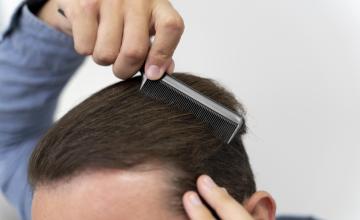
Unlike male pattern baldness (MPB) and female pattern hair loss (FPHL), which tends to follow one of the hair loss patterns defined by the NorwoodScale and the LudwigScale, Diffuse Patterned Alopecia (DPA) is characterized by diffuse thinning throughout the front, crown and vertex(crown) with no distinct pattern evident. However, like male and female pattern balding,Diffuse Patterned Alopecia patients typically preserve the stable "permanent zone" on the sides and back of the scalp and may sometimes retain a well-defined hairline. DPA is also a type of hereditary balding condition like and rogenetic alopecia (genetic hair loss).
Diffuse Patterned Alopecia (DPA) can be difficult to diagnose and, particularly in its early stages, may be confused with a similar condition known as Diffused Unpatterned Alopecia (DUPA). While both conditions are characterized by diffuse thinning, DUPA sufferers lack the stable permanent zone necessary for surgical hair restoration.
DPA often responds well to medical hair loss treatments like Propecia (finasteride) and Rogaine(minoxidil) and, due to the preservation of the permanent donor region, many DPA sufferers are candidates for hairrestoration surgery.
It’s essential that hair loss suffering men and women seeking medical and/or surgical treatment for diffuse thinning consult with a skilled and experienced hair restoration physician. Differentiating between DPA and DUPA is critical because Diffuse Patterned Alopecia patients frequently make good hair transplant candidates, whereas DUPA patients rarely do.
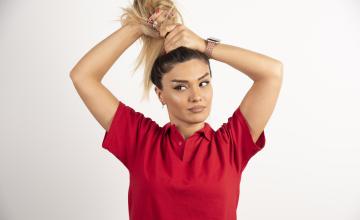
Traction alopecia is a form of hair loss resulting from the repeated yet unintentional pulling, twisting or rubbing of the hair. Traction alopecia can affect both men and women, though it's more commonly seen in women. Though it can be temporary, balding from traction alopecia may become permanent if these traumatic forces are applied to the hair and scalp repeatedly and for prolonged periods, resulting in scarring.
Practices that may result in traction alopecia include; wearing tight braids, ponytails or cornrows and extended use of hair extensions. Due to the popularity of these hairstyles, traction alopecia has become one of the leading causes of hair loss among African America women.
Balding from traction alopecia can also occur from repeatedly wearing tight-fitting hats, helmets or other headgear.This is likely where the popular hair loss myth about hats causing hair loss derived, but it is important to note that, under normal circumstances, wearing a properly fitted hat will not negatively impact hair growth.
The first step in treating traction alopeciais to change the habits leading to the condition. This may mean adopting a new hairstyle or altering your wardrobe. Finally, applying a vaso dilator like Rogaine(minoxidil) to the affected area can increase blood flow to the damaged follicles and effectively speed up new hair growth. Assuming the hair follicles have not been permanently damaged, new hair growth will likely occur though it may take several months.
In cases of severe and permanent tractional opecia, the only effective method of restoring hair to the bald areas is surgical hair restoration. State of the art, ultra-refined follicular unit hair transplantation allows quality surgeons to harvest DHT resistant hair from the donor region at the rear and sides of the head. These hairs are then implanted into the balding areas of the scalp, resulting in a natural and undetectable appearance. To see which physicians we recommend and for a free virtual consult, visit the Coalition of Independent Hair Restoration Physicians.
To learn more about how surgical hair restoration can be used to treat traction alopecia hair loss, view the following results from our hair loss forum and social community:
